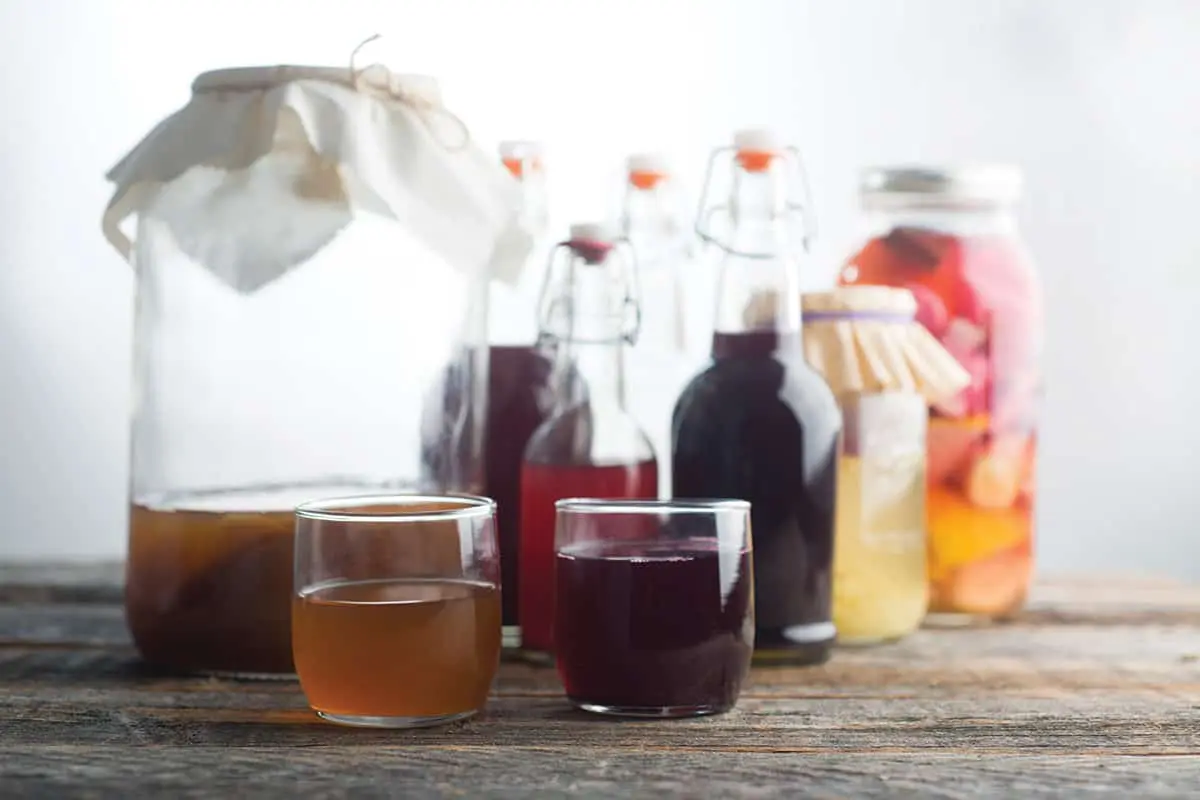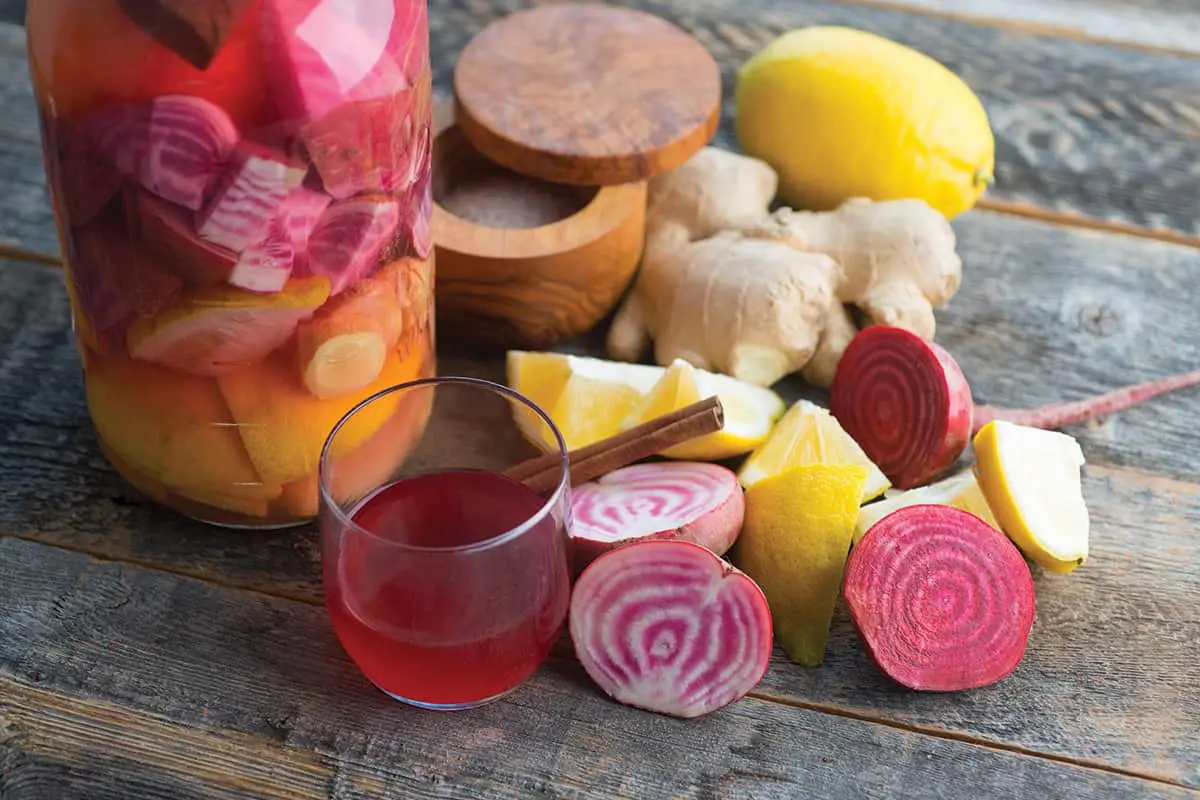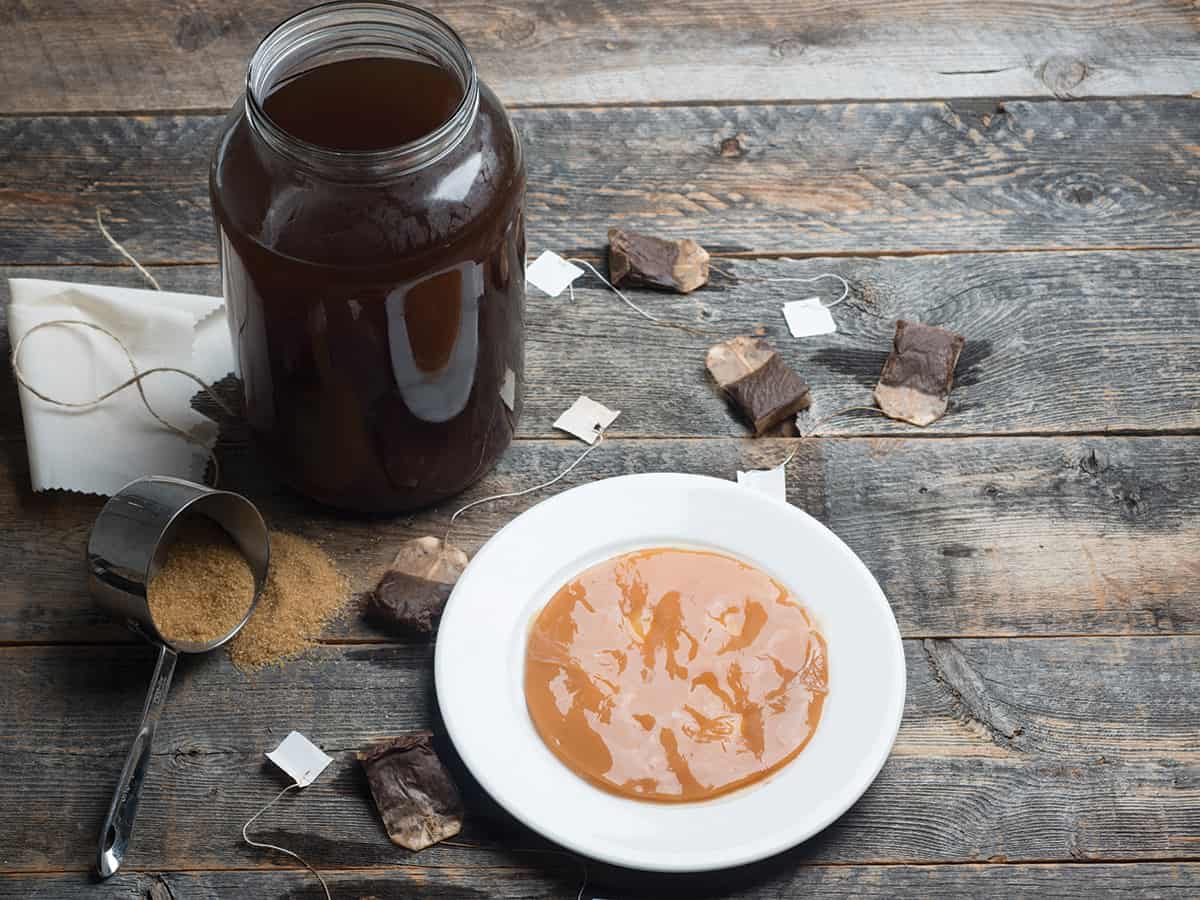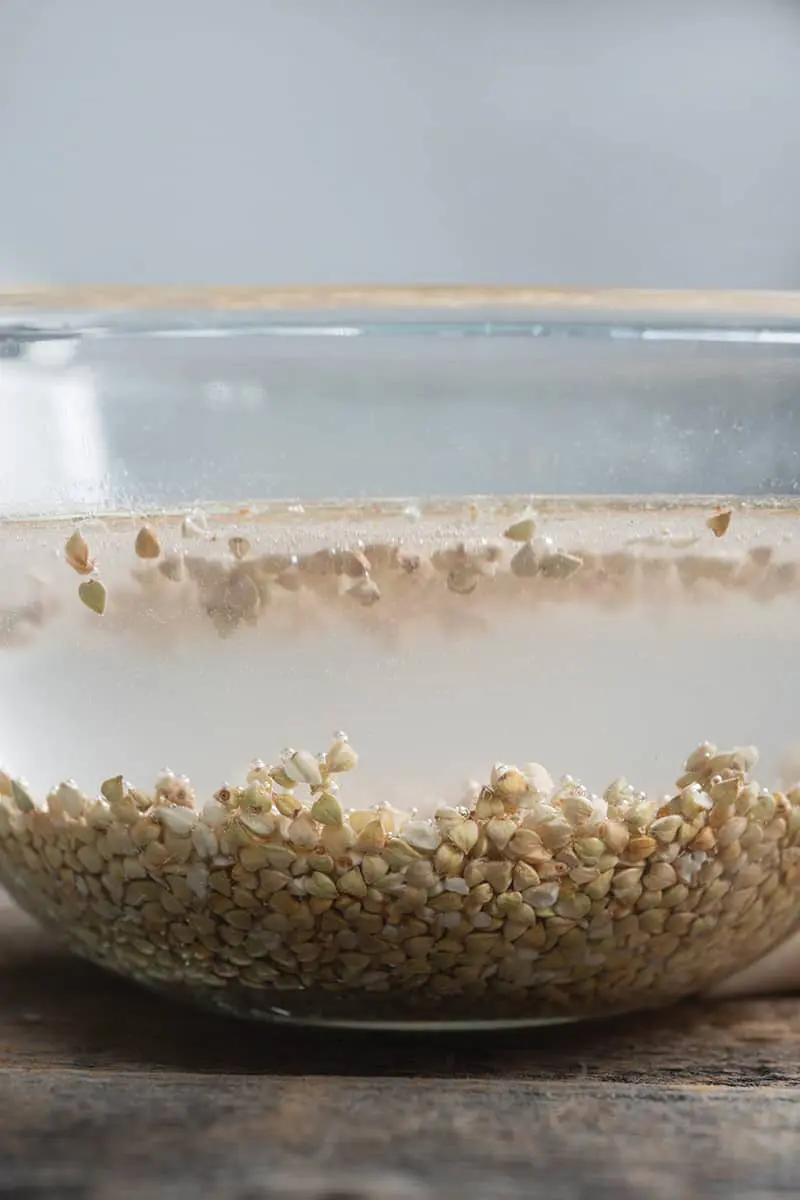By Poa Van Sickle // Photographs by Paulette Phlipot
–
Over the last decade, kombucha has gone mainstream, piquing an interest in fermented beverages. Other traditional tonic beverages are gaining attention, too. While ferments have evolved throughout the ages, what is causing their resurgence? For one, many Americans recognize that their digestion is impaired and have found relief with fermented beverages. Also, discoveries in the microbiome and its effects on both body and mind have spawned awareness around what we cannot see in the foods we consume. And lastly, people are savvier to the health implications of sugary sodas and have begun to (slowly) replace soda consumption in their diet.
Spring is the perfect time to provide a jump-start to your system and dabble in DIY ferments. And by making small-batch tonics at home, you forgo the spendy daily habit of purchasing them at the store. On the next few pages I outline some recipes that include “wild” ferments (using the natural bacteria and yeast in the air and on foods), and also those that need the assist of a culture, as in the case of kombucha. All these tonics offer certain benefits, but they can vary from person to person. Experiment with a few and note how the drink works for you. And remember—tonics were historically served as small two- to four-ounce portions, often as a digestive aid, and not necessarily in the larger sixteen- to twenty-ounce portions we see in the store.
Chioggia Beet Kvass
—
Kvass originated in Eastern Europe. It was traditionally made with old, dry bread, which was then fermented into a tonic beverage. Variations include a similar method made with vegetables and fruits. In this version, beets are used to create an intensely nutritive beverage. Beet kvass is rich in vitamins, minerals, and probiotics, and is said to be an excellent blood and liver tonic.
—
3 medium to large Chioggia beets
2 organic lemons
1 3- to 4-inch piece fresh ginger
1 cinnamon stick
1/2 teaspoon sea salt
1. Wash beets and lemons.
2. Chop beets into 1- to 2-inch pieces. Cut lemons into quarters. Slice ginger into 1/4-inch rounds.
3. Place all ingredients, except beets and half of 1 lemon, in a 2-quart glass container.
4. Add beets and then squeeze lemon half over the mixture, adding it to the container.
5. Fill container with filtered water until all ingredients are covered (water should be 1 inch or more from top of jar). Cover with a lid (not too tight).
6. Allow it to sit on counter at room temperature for 2 to 3 days, “burping” the lid each day to let gas escape.
7. Place jar in refrigerator for 2 to 3 more days.
8. Strain liquid kvass into glass storage containers and store in fridge.
9. Drink a shot each day before meals or for a cool, refreshing treat in the summertime!
10. For a second steeping, refill container with filtered water and keep on counter 1 to 2 days. Strain as above and discard mixture.
Kombucha
—
Yields 1 gallon
—
Kombucha is a sugary, caffeinated beverage traditionally made with black tea. It is fermented with a SCOBY (symbiotic colony of bacteria and yeast). The SCOBY is placed in the sweetened tea mixture where it “eats” the sugar and creates a tangy and slightly effervescent beverage with notes of vinegar. Kombucha—with its natural caffeine and slightly sweet taste—offers a “gateway drink”
to people weaning themselves off soda. It aids digestion and can assist with gout by helping the body process acid buildup. Please note: Kombucha can also be slightly alcoholic.
—
1 gallon filtered water
3/4 cup sugar
6 black or green tea bags (or loose-tea equivalent)
1 SCOBY (symbiotic colony of bacteria and yeast)
Obtain a SCOBY from a trusted friend or buy a starter culture online (culturesforhealth.com).
1. Bring water and sugar to a boil.
2. Remove from heat, add tea, and steep for 15 minutes.
3. Remove tea and cool to room temperature. Place in a glass container.
4. Add SCOBY to cooled tea.
5. Allow it to ferment for 1 to 2 weeks in a glass container, covered with cloth.
6. Store prepared kombucha in refrigerator. Drink as is or flavor with fruit juice in a secondary fermentation.
7. Make a new batch with fresh SCOBY.
* Note: Make sure your SCOBY isn’t growing mold! As a preventative, add a small amount of vinegar or previous kombucha brew to the new batch.
Ginger Bug
—
A ginger bug begins with a mixture of sugar, ginger, and water that captures wild yeasts and beneficial bacteria. It can be used as a probiotic boost (and fizz) to herbal sodas like ginger ale, root beer, and natural fruit sodas. Ginger bugs are easy to start and can be kept in the refrigerator to later be “reactivated”—similar to a sourdough starter—for soda whenever you’d like.
—
1-2 whole fresh ginger roots
1/2 cup, plus more, sugar (other sweeteners will not work!)
2 cups filtered water
1. Grate 2 to 3 tbsp. ginger and place in a quart-size Mason jar. Sprinkle 2 to 3 tbsp. sugar on top.
2. Add filtered water, stir, and lightly cover (a coffee filter secured with a rubber band works well).
3. Once daily for the next 5 days, stir the mixture and add 1 tbsp. each grated ginger and sugar. (It may take up to 8 days to create the desired culture.)
4. Your bug is ready when it forms bubbles on the top, it fizzes when stirred, it becomes slightly cloudy, and it takes on a sweet and mildly yeasty smell.
5. Once the ginger bug has cultured, keep it alive and continue growing it by feeding it regularly as above or “rest” it in the fridge. To reactivate, remove, let it reach room temperature, and begin feeding it 1 tsp. sugar and 1 tsp. grated ginger per day until it’s fizzy again.
6. Create fermented fruit sodas by adding 1/4 cup ginger bug starter per quart of diluted fruit juice. Place in flip-top bottles (like repurposed Grolsch beer bottles) and store in fridge.
Rejuvelac
—
Rejuvelacs are fermented tonic beverages made from sprouted grains, typically sprouted wheat berries. These effervescent drinks have a tangy flavor, perfect for a hot summer night. They contain beneficial bacteria, as well as beneficial digestive enzymes, and are rich in vitamins, minerals, and amino acids. Drop in some basil or mint sprigs before refrigerating for a drink with a twist.
—
1 cup wheat berries (or use rye, barley, millet, buckwheat,
or quinoa)
Filtered water
1. Soak grains in filtered water overnight or up to 24 hours. Strain and rinse.
2. Transfer to a sprouting jar or glass container for 2 to 3 days, rinsing at least once daily.
3. When grains sprout (a small white tail will appear), rinse well and transfer to a large glass container (quart-size Mason jars work well).
4. Add 1 quart of filtered water.
5. Cover and let sit on counter at room temperature for 2 to 3 days.
6. Check daily and watch for small bubbles to appear. Liquid should be slightly cloudy and smell pleasantly sour.
7. Strain liquid into storage containers and store in fridge.
8. Discard grains or, for a second steeping, refill container with filtered water and let sit for another 2 days. Repeat step 7.
Notes:
If you skip a day, no biggie. Ferments aren’t superspecific.
If mold appears on the top, scrape it off. If this happens more than once, discard and start again.
If after 7 or 8 days the mixture hasn’t taken on the above characteristics, discard and start again.
Keep the culture away from other cultures like sauerkraut and kombucha.




